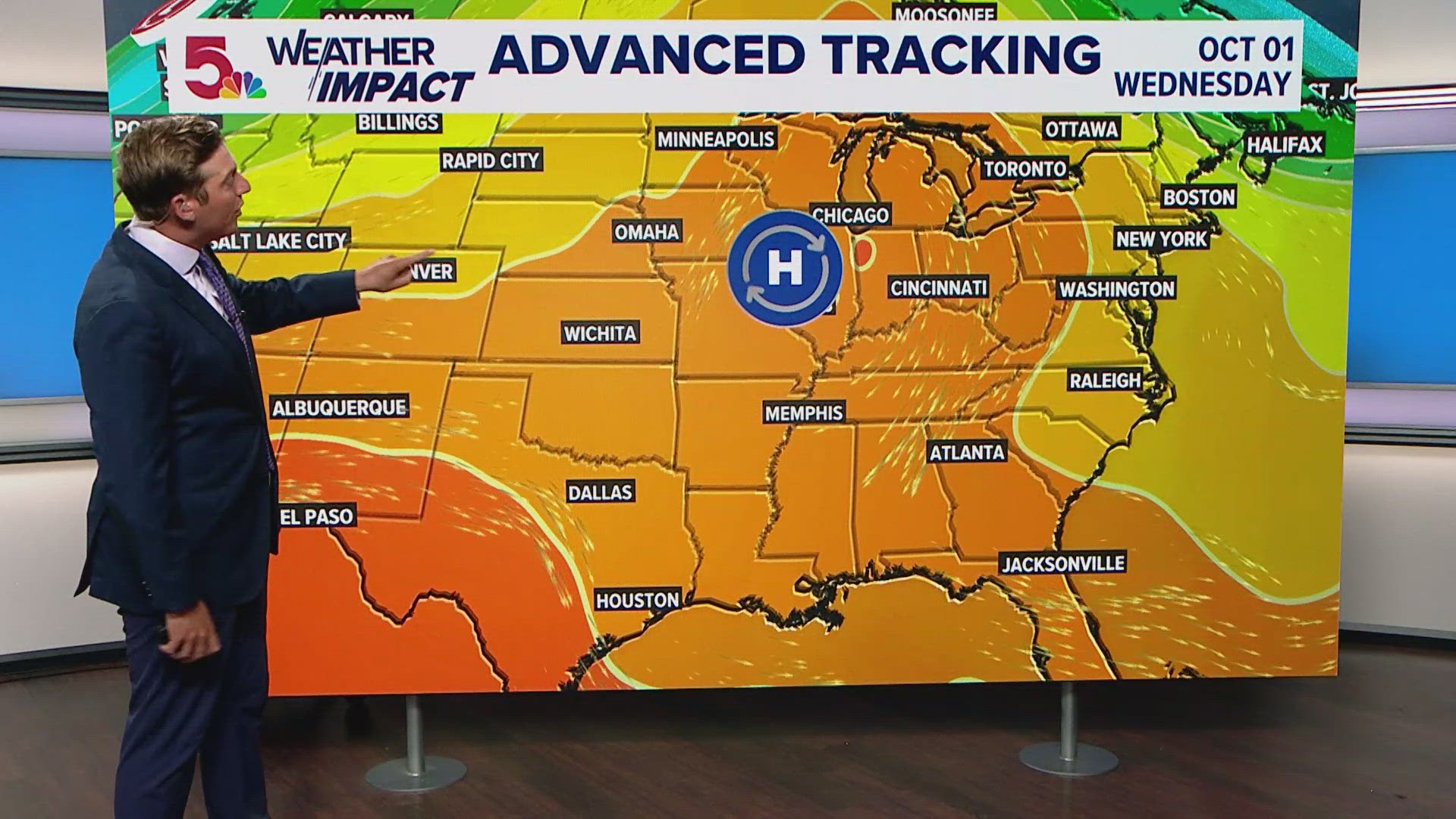Report on an Educational Initiative to Advance Sustainable Development Goals in the Upper Medina River Watershed
Introduction and Alignment with Global Goals
The Texas Water Resources Institute (TWRI) has announced an educational program scheduled for October 14 in Medina, designed to advance land and water stewardship. This initiative directly supports several United Nations Sustainable Development Goals (SDGs) by focusing on the protection and restoration of critical ecosystems. The program’s core objectives align with SDG 6 (Clean Water and Sanitation), SDG 15 (Life on Land), and SDG 4 (Quality Education) through community engagement and knowledge dissemination.
Program Objectives and Contribution to SDG 6: Clean Water and Sanitation
The primary goal of the Texas Riparian and Stream Ecosystem Education Program is to improve local water resources, a key target of SDG 6. The workshop will educate participants on the functions of riparian zones and how their proper management contributes to:
- Improving both water quality and quantity, directly addressing SDG Target 6.3 on reducing pollution and SDG Target 6.6 on protecting water-related ecosystems.
- Preventing degradation from nonpoint source pollution, supported by funding from the Clean Water Act.
- Implementing integrated water resources management at the local level, in line with SDG Target 6.5.
Enhancing Biodiversity and Supporting SDG 15: Life on Land
The program places significant emphasis on riparian areas as vital ecosystems, which is central to SDG 15. By educating landowners and residents, the workshop aims to promote the conservation and sustainable use of these terrestrial and inland freshwater ecosystems. Key outcomes related to SDG 15 include:
- Protecting and restoring the unique habitats and forage areas that riparian zones provide for local wildlife.
- Taking action to reduce the degradation of natural habitats and improve the health of fish communities and aquatic ecosystems (SDG Target 15.5).
- Fostering an understanding of watershed processes to ensure the long-term health and resilience of land adjacent to water bodies (SDG Target 15.1).
Fostering Partnerships and Education for Sustainability (SDG 17 & SDG 4)
This initiative exemplifies a multi-stakeholder partnership (SDG 17) for sustainable development, bringing together academic, governmental, and local organizations. It also serves as a platform for lifelong learning, contributing to SDG 4 by equipping citizens with the knowledge needed to promote sustainability.
Collaborating Partners:
- Texas Water Resources Institute (TWRI)
- Bandera County River Authority and Groundwater District
- Texas A&M AgriLife Extension Service
- Texas Riparian Association
- U.S. Department of Agriculture Natural Resources Conservation Service
- Texas Parks and Wildlife Department
- Texas A&M Forest Service
Professional Development and Capacity Building
To further integrate sustainable practices into professional sectors, the workshop offers Continuing Education Units (CEUs). This builds capacity among key stakeholders to implement practices that protect water and land resources.
CEUs Available:
- Texas Department of Agriculture (3 units)
- Texas Forestry Association, Society of American Foresters, and International Society of Arboriculture (6-8 hours)
- Texas Floodplain Management Association (7 hours)
- Certified Crop Advisers (7 hours)
- Texas Nutrient Management Planning Specialists (6 hours)
- Professional Engineers and Architects
Event Logistics
The program is free to attend and will be held from 8 a.m. to 4:30 p.m. at the Nature Conservancy’s Love Creek Preserve. Registration is required by October 7.
Analysis of Sustainable Development Goals (SDGs) in the Article
1. Which SDGs are addressed or connected to the issues highlighted in the article?
-
SDG 6: Clean Water and Sanitation
The article is centered on the “Texas Riparian and Stream Ecosystem Education Program,” which directly aims to improve “Water quality and quantity” through “proper management, protection and restoration” of riparian areas. It emphasizes preventing water degradation in the Upper Medina River watershed, which aligns with the core objectives of ensuring the availability and sustainable management of water.
-
SDG 15: Life on Land
The program focuses on protecting and restoring “riparian and stream ecosystems,” which are critical inland freshwater ecosystems. The article states that proper management improves the “soundness of stream banks, fish communities and aquatic habitats,” and that riparian areas provide “habitat and forage.” This directly addresses the goal of protecting, restoring, and promoting the sustainable use of terrestrial ecosystems.
-
SDG 4: Quality Education
The entire initiative described is an “education program” and a “workshop” designed to provide knowledge and skills. Its stated goal is for “participants to better understand riparian and watershed processes.” By offering continuing education units (CEUs) to professionals like foresters, crop advisers, and engineers, it promotes lifelong learning opportunities for sustainable development, which is a key aspect of quality education.
-
SDG 17: Partnerships for the Goals
The article highlights a multi-stakeholder collaboration. The workshop is “co-hosted” by multiple entities (Bandera County River Authority and Groundwater District, Texas A&M AgriLife Extension Service, Texas Riparian Association) and involves presentations from several others (USDA, TPWD, etc.). Furthermore, it is funded through a partnership grant involving the “Texas State Soil and Water Conservation Board” and the “U.S. Environmental Protection Agency,” exemplifying the partnerships needed to achieve sustainable development goals.
2. What specific targets under those SDGs can be identified based on the article’s content?
-
Target 6.6: Protect and restore water-related ecosystems
The article’s primary focus is on an education program for the “protection and restoration of these critical areas,” specifically “riparian and stream ecosystems.” This directly supports the target of protecting and restoring ecosystems essential for water quality and availability.
-
Target 15.1: Ensure the conservation, restoration and sustainable use of terrestrial and inland freshwater ecosystems
The workshop aims to educate landowners and residents on how to “better manage riparian and stream ecosystems.” It discusses the “nature and function of stream and riparian zones” and the improvement of “fish communities and aquatic habitats,” which aligns perfectly with the conservation and restoration of inland freshwater ecosystems.
-
Target 4.7: Ensure all learners acquire knowledge and skills needed to promote sustainable development
The workshop is an example of “education for sustainable development.” It is designed for “citizens interested in land and water stewardship” to help them “better understand riparian and watershed processes” and learn about resources to “prevent degradation while improving water quality.” The provision of CEUs further reinforces its role in equipping professionals with skills for sustainable practices.
-
Target 17.17: Encourage and promote effective public, public-private and civil society partnerships
The event is a collaborative effort involving academic institutions (Texas Water Resources Institute, Texas A&M AgriLife), government agencies (USDA, EPA, Texas Parks and Wildlife), local authorities (Bandera County River Authority), and non-profit associations (Texas Riparian Association). This multi-stakeholder partnership is a direct implementation of this target.
3. Are there any indicators mentioned or implied in the article that can be used to measure progress towards the identified targets?
-
Implied Indicators for Water and Ecosystem Health (Targets 6.6 & 15.1)
The article implies that the success of the management practices taught can be measured by improvements in:
- Water quality and quantity
- The soundness of stream banks
- The health of fish communities and aquatic habitats
These are outcomes that could be monitored to gauge the program’s long-term impact.
-
Direct Indicators for Education and Capacity-Building (Target 4.7)
The article provides direct indicators for measuring the reach of the educational program:
- The number of attendees who RSVP and participate in the workshop.
- The number of professionals who receive continuing education units (CEUs) across various fields such as agriculture, forestry, and engineering.
-
Direct Indicator for Partnerships (Target 17.17)
The existence of the partnership itself is an indicator. The article explicitly lists the numerous organizations involved in co-hosting, presenting, and funding the workshop, which serves as a qualitative indicator of a functional multi-stakeholder partnership.
SDGs, Targets and Indicators Summary
| SDGs | Targets | Indicators |
|---|---|---|
| SDG 4: Quality Education | 4.7: Ensure all learners acquire knowledge and skills needed to promote sustainable development. |
|
| SDG 6: Clean Water and Sanitation | 6.6: Protect and restore water-related ecosystems. |
|
| SDG 15: Life on Land | 15.1: Ensure the conservation, restoration and sustainable use of terrestrial and inland freshwater ecosystems. |
|
| SDG 17: Partnerships for the Goals | 17.17: Encourage and promote effective public, public-private and civil society partnerships. |
|
Source: agrilifetoday.tamu.edu







